Unlocking the Secrets of Germanium Diodes: Applications, Advantages, and More
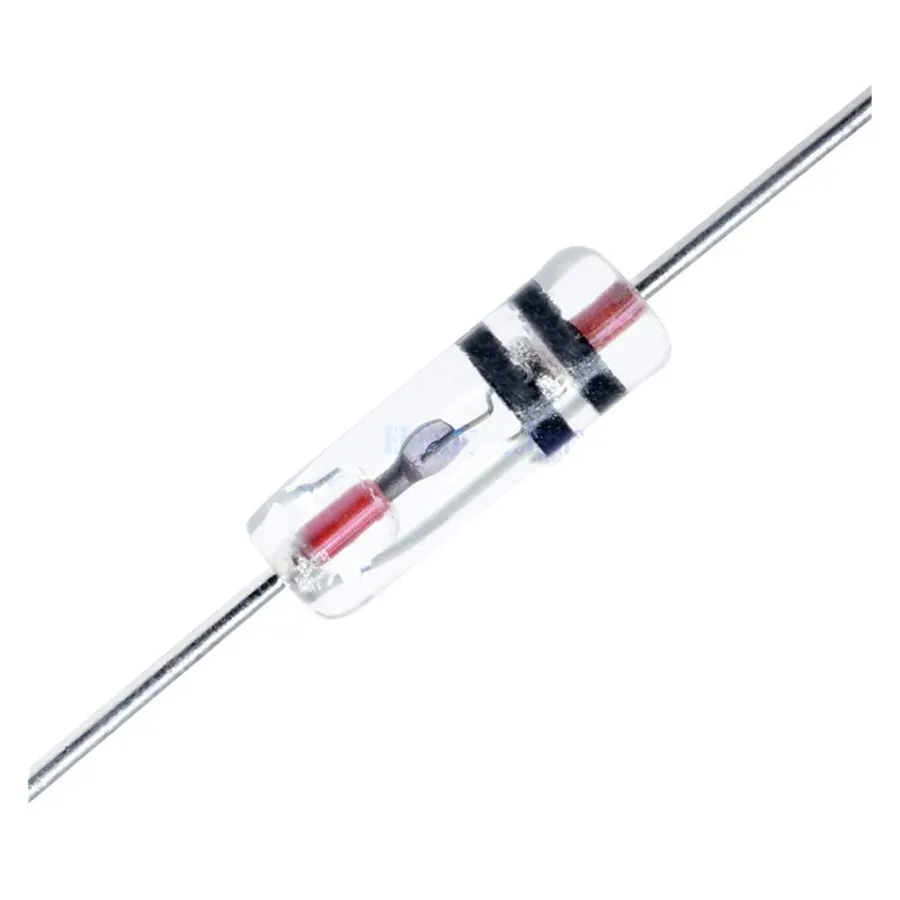
In our world powered by silicon, germanium diodes represent a fascinating throwback to early semiconductor technology. These devices, pivotal in the dawn of electronics, possess unique characteristics that continue to intrigue engineers and hobbyists alike. This article delves deep into the world of germanium diodes, exploring their historical significance, operational principles, and niche applications, providing a concise guide to their enduring relevance.
What are Germanium Diodes?

Germanium diodes, pivotal in early semiconductor technology, are two-terminal electronic components crafted from germanium, a metalloid element. Distinguished from their silicon counterparts, germanium diodes exhibit unique electrical characteristics, primarily a lower forward voltage drop, that made them foundational in the initial stages of solid-state electronics.
These devices played a crucial role in the development of early radio and electronic devices. Their use predates the widespread adoption of silicon-based semiconductors. The transition from vacuum tubes to solid-state devices was significantly advanced by the use of materials like germanium. Germanium diodes laid the groundwork for the semiconductor revolution, leading to more efficient and compact electronics.
Germanium's lower bandgap energy compared to silicon allows for conduction at lower voltages. This characteristic is particularly useful in applications that require low voltage signal processing. While silicon diodes are now more common, germanium diodes continue to find specific uses where their unique properties are advantageous.
Key Characteristics: Forward Voltage Drop and Reverse Current
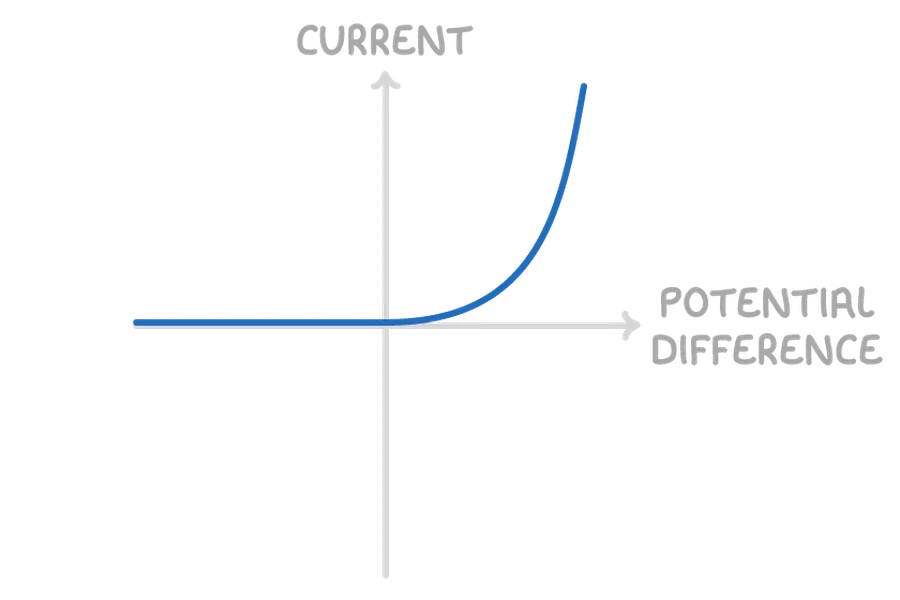
Germanium diodes are distinguished by their unique electrical characteristics, most notably a lower forward voltage drop and a higher reverse current compared to their silicon counterparts. These properties are critical in understanding their applications and advantages in specific electronic circuits. The forward voltage drop, the voltage required for the diode to conduct electricity, is approximately 0.3V for germanium diodes, while silicon diodes typically require around 0.7V. This lower threshold makes germanium diodes suitable for applications where even small voltage drops are significant. Furthermore, germanium diodes exhibit a higher reverse current, which is the small amount of current that flows in the opposite direction when the diode is reverse-biased. Although generally undesirable, this characteristic can be beneficial in certain situations, such as signal detection in radio circuits.
| Characteristic | Germanium Diode | Silicon Diode |
|---|---|---|
| Forward Voltage Drop (Typical) | ~0.3V | ~0.7V |
| Reverse Current | Higher | Lower |
| Temperature Sensitivity | More Sensitive | Less Sensitive |
Germanium Diode Models: The Iconic 1N34A
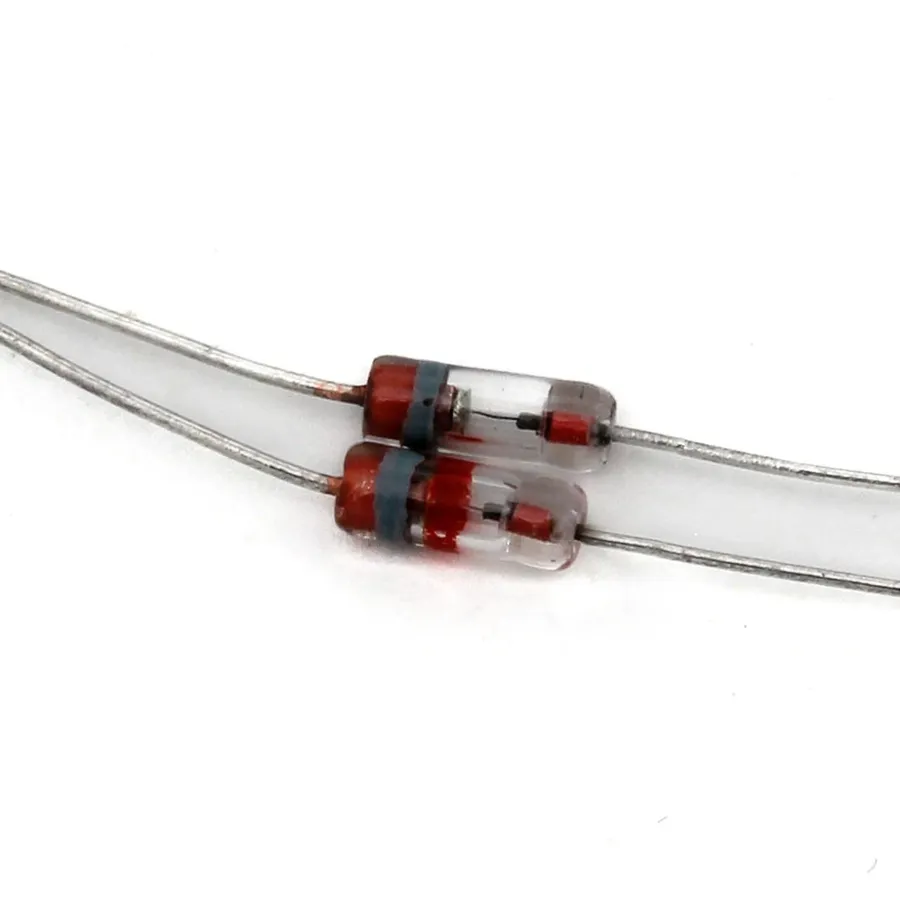
While various germanium diodes have been produced, the 1N34A stands out as a particularly prevalent and well-documented model. Its widespread availability and characteristic electrical properties have made it a staple in both vintage and contemporary electronic applications. This section details the 1N34A's specifications and common uses.
| Characteristic | 1N34A Typical Value |
|---|---|
| Forward Voltage Drop (typical) | 0.2 - 0.3 V |
| Maximum Reverse Voltage | 60 V |
| Maximum Forward Current | 50 mA |
| Reverse Leakage Current (typical) | 5 - 150 µA |
| Operating Temperature Range | -55°C to 85°C |
| Junction Capacitance | ~1pF at 0V |
The 1N34A's small size and low forward voltage drop make it ideal for applications that require precise detection of weak signals, such as in crystal radios or as envelope detectors in AM radio receivers. The low forward voltage drop is typically in the range of 0.2 to 0.3 volts, which significantly impacts circuit design, especially when compared to silicon diodes which have forward voltage drop at around 0.7V. The reverse leakage current is generally higher than that of silicon diodes and needs to be considered in precision circuits.
While the 1N34A is the most iconic and easily available germanium diode, there are other models that may be encountered, such as the 1N60 and 1N270. Each model has slightly different characteristics, but the 1N34A is often the focus in discussions due to its wide availability and common usage in DIY electronics, repair of older equipment and vintage audio equipment.
Applications of Germanium Diodes: Vintage and Modern Uses
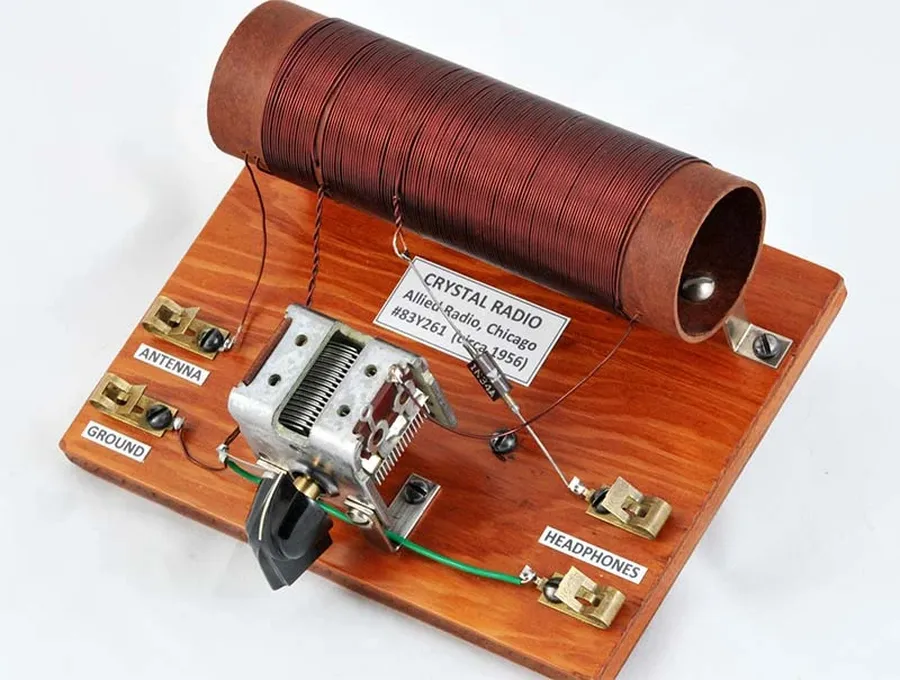
Germanium diodes, while largely superseded by silicon in many applications, retain a niche presence due to their unique electrical properties. Their lower forward voltage drop and distinctive non-linear current-voltage characteristics make them uniquely suitable for specific applications, spanning from vintage designs to contemporary niche circuits. This section delves into these uses, showcasing their continued relevance.
- Vintage Radio Detection
In the early days of radio, germanium diodes were the component of choice for detecting radio signals. The 1N34A and similar models are still used in crystal radio sets due to their ability to rectify very small signals with minimal loss compared to silicon alternatives. Their lower forward voltage drop is crucial for extracting audio from weak radio waves. This low forward voltage requirement allows them to detect RF signals as low as 0.2 volts, a feat not easily accomplished by silicon diodes. This is due to the fact that they require less voltage to begin conducting electricity. - Audio Equipment
Germanium diodes were often found in vintage audio gear, particularly in distortion and overdrive circuits. They have a 'softer' clipping characteristic than silicon diodes, creating a more gradual distortion that is valued for its warmer, less harsh sound. This makes them desirable in guitar effects pedals, where the subtle differences in clipping behavior can significantly alter the resulting tone. These subtle differences contribute to the desired 'vintage' sound sought after by many musicians. - Temperature Sensing
While not as common, germanium diodes can be used as temperature sensors. Their forward voltage drop is more temperature-dependent than silicon diodes, making them suitable for certain specialized temperature sensing applications. Their sensitivity to temperature change allows for accurate temperature readings in specific ranges, though this requires careful calibration due to the non-linearity of the relationship. - Specialized Circuits
Germanium diodes also find use in niche applications, including RF signal processing and protection circuits, due to their unique non-linear properties. Their ability to conduct at lower voltages allows them to be used as signal clippers and waveform shapers in specific electronic designs. These devices can sometimes be found in precision instrumentation that requires low-voltage threshold behavior. - Guitar Effects Pedals
The unique distortion characteristics of germanium diodes, particularly the 1N34A, have made them popular among musicians and effect pedal builders. Their ability to introduce subtle, organic-sounding distortion is hard to replicate with silicon diodes, leading to their continued use in a wide range of fuzz, overdrive, and distortion circuits. This use is prized by musicians seeking a specific tonal quality.
Germanium vs. Silicon Diodes: A Comparative Analysis
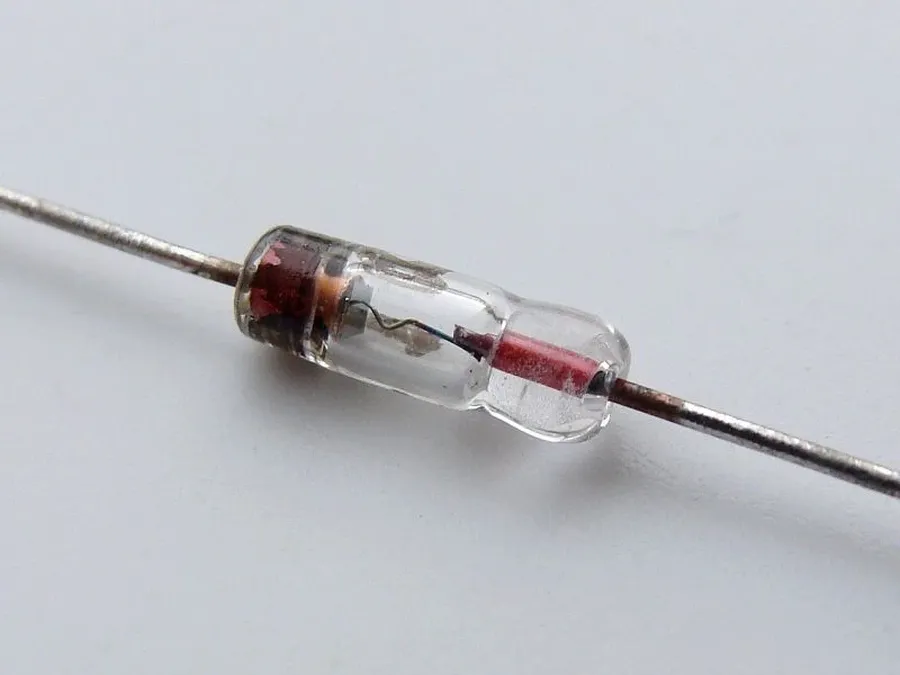
While both germanium and silicon diodes function as semiconductor rectifiers, their material properties lead to distinct electrical characteristics. This section provides a detailed comparison of their performance attributes, advantages, and limitations, aiding in informed selection for specific applications.
| Characteristic | Germanium Diode | Silicon Diode |
|---|---|---|
| Forward Voltage Drop | ~0.3V | ~0.7V |
| Reverse Current (Leakage) | Higher | Lower |
| Temperature Sensitivity | Higher | Lower |
| Operating Temperature Range | Lower (typically up to 85°C) | Higher (typically up to 150°C) |
| Switching Speed | Generally Faster | Generally Slower |
| Availability | Less Common, Limited Production | Widely Available, Mass Produced |
| Cost | Generally More Expensive | Generally Less Expensive |
| Typical Applications | Vintage Electronics, Signal Detection, Specific Audio Effects | General Rectification, Power Supplies, Modern Electronics |
| Radiation Sensitivity | More Sensitive | Less Sensitive |
| Manufacturing Complexity | More Complex (due to material properties) | Less Complex |
Frequently Asked Questions About Germanium Diodes
This section addresses common questions about germanium diodes, providing clarity on their applications, continued relevance, unique advantages, and how they compare to silicon diodes.
- What are the primary applications of germanium diodes?
Germanium diodes are primarily used in vintage electronics, such as radio detectors and audio equipment, due to their low forward voltage drop. They are also found in some guitar pedals and niche circuits where their unique distortion characteristics are valued. - Are germanium diodes still relevant in modern electronics?
While silicon diodes dominate modern electronics due to their superior temperature stability and lower reverse leakage, germanium diodes still find use in specific applications. Their unique properties make them irreplaceable in some vintage restoration projects, and they have a niche following in the audio and effects pedal market. - What are the key advantages of using germanium diodes over other types?
The main advantage of germanium diodes is their lower forward voltage drop, typically around 0.3V, compared to silicon diodes, which are around 0.7V. This makes them useful in low-voltage applications. Furthermore, their response characteristics can create distinctive audio distortions which are desired in some circuits. - How do germanium diodes compare to silicon diodes in terms of performance?
While germanium diodes offer a lower forward voltage drop, they also have a higher reverse current leakage and are more temperature-sensitive than silicon diodes. Silicon diodes generally outperform germanium diodes in most modern applications due to their stability, efficiency, and affordability. - Why is the lower forward voltage drop of germanium diodes significant?
The lower forward voltage drop means that germanium diodes begin conducting current at a lower voltage than silicon diodes. This is particularly useful in circuits where small signals are being rectified or detected, like in early radio receivers or in some audio processing applications. - What are the drawbacks of using germanium diodes?
Germanium diodes suffer from higher reverse leakage current, which can lead to inefficiency and temperature instability. Their sensitivity to temperature changes means their performance can vary, making them less predictable than silicon diodes. Moreover, germanium is a less abundant and more expensive material compared to silicon.
Identifying Germanium Diodes: Physical Characteristics and Testing
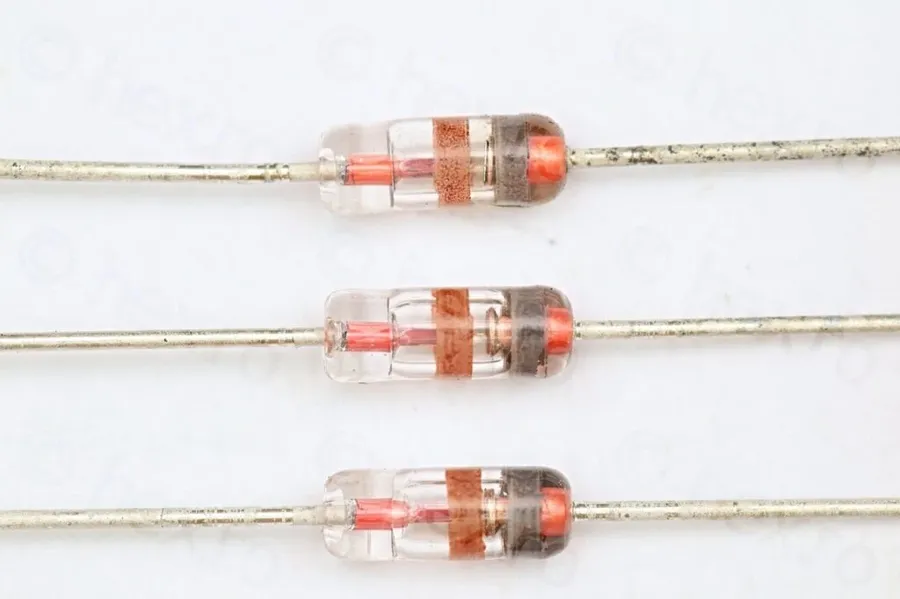
Identifying germanium diodes accurately is crucial, especially when dealing with vintage components or when selecting specific diodes for particular applications. Unlike their silicon counterparts, germanium diodes often exhibit unique physical characteristics and require specific testing procedures to confirm their identity and functionality.
- Physical Markings
Many germanium diodes, particularly older models, feature a glass body with a distinct color band near one end indicating the cathode terminal. However, this is not a universal standard, and some may have a different structure such as a small metal or plastic case, typically with the cathode end marked with a dot or band. - Color Codes
While not as standardized as resistor color codes, some manufacturers use color bands to denote the diode type or series. However, the color coding is not universal. Often, the part number is printed on the diode body, but this can be too small or faded. In older diodes, you may find a simple 'G' etched into the casing to indicate germanium. - Size and Shape
Germanium diodes are usually physically smaller than standard power silicon diodes. Older germanium diodes often have a larger cylindrical body, while some modern types may come in surface-mount packages. - Testing with a Multimeter
A multimeter can be used to distinguish germanium from silicon diodes. Set the multimeter to the diode test mode. Place the positive lead (red) on the anode and the negative lead (black) on the cathode of the diode. The forward voltage drop for a germanium diode is typically between 0.2V and 0.4V. A reading significantly higher (around 0.6-0.7V) suggests a silicon diode. Testing the reverse direction should ideally show no conduction, though germanium diodes often show a small reverse current, which makes them difficult to test definitively in this way. A test of the forward voltage will generally be sufficient to indicate its type. - Important Note
Given the wide range of diode types and manufacturers, the methods given here are indicative. Always cross-reference component markings and multimeter readings with datasheets when available for definitive identification. Exercise caution when working with old components as their performance characteristics may vary considerably.
Where to Source Germanium Diodes Today: Challenges and Options
Sourcing germanium diodes in the current electronics market presents a unique set of challenges, primarily due to their limited production and replacement by silicon alternatives in most modern applications. However, for vintage restoration, specialized audio effects, or experimental projects, obtaining these components remains essential. This section provides guidance on navigating the sourcing landscape for germanium diodes, focusing on reliable channels and the potential pitfalls.
- Specialized Electronic Component Suppliers
Several reputable online retailers specialize in vintage and niche electronic components. These suppliers often carry a selection of germanium diodes, including popular models like the 1N34A. While prices may be higher than for modern components, these vendors generally offer a greater assurance of quality and authenticity. - Vintage Electronics Marketplaces
Online marketplaces dedicated to vintage electronics enthusiasts often feature listings for germanium diodes. These can be a viable source, but careful evaluation of the seller and the product’s condition is paramount. Look for sellers with high ratings and detailed product descriptions to avoid purchasing counterfeit or degraded components. - Surplus and Salvage Operations
Surplus electronics dealers may occasionally offer germanium diodes salvaged from older equipment. While these are potentially cost-effective, their reliability can be variable. Thorough testing is crucial to ensure the component meets your specifications. This route requires a higher level of electronics knowledge and may not be suitable for all applications. - Direct from Manufacturers (Limited)
It's important to note that there are very few manufacturers today who actively produce germanium diodes. Finding a reliable manufacturer will likely be challenging, as many current sellers resell existing and sometimes aged stock. The few manufacturers that exist mostly offer small batches for specialized applications.
Challenges in sourcing germanium diodes include verifying the authenticity of the component, managing shelf-life and storage conditions, and dealing with the possibility of higher cost. Unlike silicon diodes, germanium diodes are prone to degradation over time, and can have altered characteristics if improperly stored. It is recommended to purchase from suppliers with a good history of quality and who can speak to the storage and manufacturing of their stock. The age of germanium diodes has implications to their performance, as older diodes can have higher reverse current and altered forward voltages. Checking datasheets for specific details about the diode being purchased is highly recommended, as different models have different performance characteristics.
When purchasing germanium diodes, carefully consider the purpose for which they are needed. If a precise performance is crucial, consider purchasing from more reliable sources and testing the diodes before installing in equipment. In general, proper testing of the diodes before installation can mitigate risk, however, the quality of the diodes should still be considered when making purchase decisions.
Substitutes and Alternatives: What to Use if Germanium is Unavailable?
When germanium diodes are unavailable or unsuitable for a specific application, several alternative components can be considered. However, directly replacing a germanium diode with a different type might alter circuit behavior, due to their distinct electrical characteristics. Understanding these trade-offs is key to achieving the desired performance.
- Silicon Diodes
Silicon diodes are the most common alternative, but have a higher forward voltage drop (around 0.6-0.7V) compared to germanium (0.3V). This difference can impact circuit performance, especially in low-voltage applications or circuits that rely on the specific nonlinear behavior of germanium diodes. For rectification, signal diodes like the 1N4148 can be used, but for specific characteristics like soft clipping in audio circuits, careful consideration needs to be given to the circuit design. - Schottky Diodes
Schottky diodes, with their lower forward voltage drop (typically around 0.2-0.4V), offer a closer approximation to germanium diodes than standard silicon diodes. However, Schottky diodes also have higher reverse leakage current compared to silicon diodes, which may be an important factor in certain circuit designs. Their switching characteristics make them ideal for high-frequency applications and low-voltage power rectification. - Transistors in Diode Configuration
A transistor can be configured to emulate the behavior of a diode by connecting the base to the collector. This approach allows some tunability of the forward voltage drop by adjusting the biasing or choosing different transistor types. This method can be advantageous in experimental circuits where very specific characteristics are required. However, the emulation does not perfectly duplicate the behaviour of germanium diodes, especially with regard to temperature dependence. - Specialized Low-Forward-Voltage Diodes
Certain manufacturers produce specialized low forward voltage drop diodes that are designed to approach the characteristics of germanium diodes, although these may not be as readily available as standard diodes. These diodes can be a viable alternative but require careful selection to match the desired voltage drop and temperature characteristics.
When selecting substitutes for germanium diodes, careful attention should be paid to the specific application. Consider the impact of different forward voltage drops on circuit operation, paying attention to critical parameters such as the bias point, noise performance and signal characteristics. While no substitute perfectly replicates germanium's unique characteristics, strategic choices can yield acceptable results in many applications.
Germanium diodes, despite being superseded by silicon in many applications, maintain their relevance due to unique properties such as lower forward voltage drop. This makes them the ideal choice in certain niche electronic applications, including audio circuits that rely on their unique distortion characteristics. Understanding germanium diodes not only offers a glimpse into the past but provides an engineer with more options in a tool kit for modern circuit design, and their continued production in specialty applications ensures their presence in electronic design for the foreseeable future.
 AnyPCBA
AnyPCBA